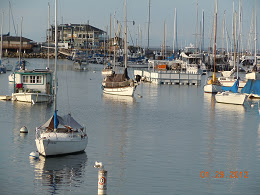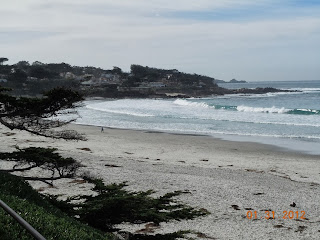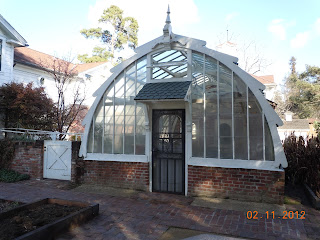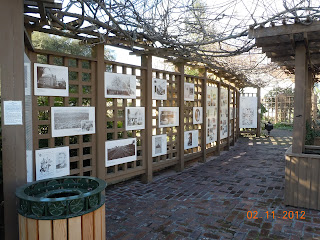 |
| Montana cattle roundup |
The big ranches of the American West grew in both size and number during the years right after the end of the American Civil War. Not that there were no ranches prior to this. What was probably the largest ranch in the world in the late 1850's was the enormous
King Ranch in the corner of southeast Texas, south of Corpus Christie. In the case of Mr. Richard King and his King Ranch, he was a bit caught up in the events of the Civil War.
Texas was on the side of the Confederacy during the war and so was King, or at least he knew he'd better be considering where he was residing. King's ranch was raided several times by Union forces in Texas considering it a stopping off site for traveling and resupply for southern forces. In fact, Union forces arrived at one time with orders for his arrest. Supposedly King had been tipped off on the raid and was nowhere to be seen when the Union officers arrived at his ranch.
The King Ranch in southeastern Texas and the
XIT Ranch in the Texas Panhandle were the two largest ranches in Texas and both have very unique stories about how they came to be. Life in the old west was quite different than in the cities of the latter 1800's.
The Frontier Woman
 |
| Colorado Trail Drive, 1898 |
So much has been written concerning famous and/or infamous women of the American west that the life of the average hard working frontier women has been largely ignored.
Women on the frontier made significant contributions. There are some interesting stories about the introduction of women on the American western frontier and particularly as wives of ranchers. These were not what one might consider women cowgirls. These women of the old west weren't involved in stagecoach robberies like
Pearl Hart in Arizona and they weren't noted for frontier scouting among other things such as with
Calamity Jane and they didn't hang out with known outlaws like
Belle Starr.
What the frontier woman did do was work hard in difficult settings and contributed in a big way to the civilizing of the west. To understand the settling of the American frontier outside of Hollywood stereotypes, a look at how the
wives of ranch owners adapted to their new surroundings is quite enlightening. The presence of someone in the old west who could cause a cowboy to act more gentlemanly had to be appreciated.
For the most part, women married to ranchers were brought into the frontier "
after" the male established himself. Conditions were rough in the decade after the Civil War and the man striving to get a herd together and start a ranch had all he could do to provide suitable living conditions for himself. Most aspiring ranchers thought the conditions just too harsh and dangerous for their wife or new bride. The idea at the time was to establish oneself in the ranching industry and then
return to one's hometown to find yourself a bride, or if you had a wife, make arrangements to take her out west. This was the beginning of adventure for many a frontier woman.
Mrs. Charles Goodnight
In the book
"Cattle Kings" by author Lewis Atherton,several good observations were made as to the type of woman that a rancher seemed to gravitate towards. For the most part, they seemed to chose a like minded wife. The rancher himself was a
strong individualist, one of the reasons he got into ranching in the first place, and many times this was the type of partner they preferred.
 |
| Cowgirl Lucille Mulhall |
A good example was
Charles Goodnight, one of the more successful ranchers in the
Texas Panhandle region. Prior to ranching in Texas, Goodnight established a ranch in Colorado and married for the first time only after that ranch was up and running.
Mrs. Goodnight was an adventuresome pioneer woman and the ranch life in Colorado seemed to satisfy her. Unfortunately, the
financial panic of 1873 pretty much bankrupted Goodnight and while he took care of all his debts he sent his wife to live in California.
His plans were to bring her back when he reestablished himself at another location. He did reestablish himself in the Texas Panhandle at
Palo Duro Canyon, a fairly remote area, and wished for her to hold back until he could make the living arrangements a bit more civilized. To this request she refused. When she arrived at the new ranch after a long hard overland journey,
she found that the nearest female ranch woman was some eighty miles away.
Not shying away from adventure it seems that Mrs. Goodnight spent much of her time as a frontier woman patching the clothes of cowboys and tending to the quite small and non-luxurious home.
What's quite interesting is that Mrs. Goodnight did indeed enjoy adventure and didn't shy away from the hardship such remote living naturally brings. A woman who chose this way of life did so without guarantees. The hope was that after a few years of very hard work in inhospitable surroundings, prosperity would eventually come and the days ahead would be better. Some ranch women did attain this and some others did not. This is why a ranch owner needed a certain kind of wife. One who was willing to take on the same gamble.
The Frontier Woman Helped In the Success
 |
| Cheyenne Cowgirl poster |
How successful a rancher was pretty much dictated what the rancher's wife had to endure. Pioneer women were met with a variety of circumstances. The wives of some of the bigger ranchers no doubt had workers present who do a lot of the chores for them. If that wasn't the case, then a ranch woman might a life filled with drudgery. Cooking, sewing, fetching what water was available for washing and in many cases
helping her husband with regular cowboy duties could be a typical day in some ranch women's life. It really was a life of voluntary sacrifice with the hope of better days ahead. In a sense, the pioneer women were taking a big gamble.
Another western rancher of the post Civil War era was
George Littlefield. The ranch was in the area of
Gonzales Texas.
In the year 1869 the Littlefields were struggling earning about $150 per year by farming. Littlefield was an ex Confederate officer and Mrs. Littlefield came from a southern plantation and was accustomed to the rural life. Becoming a frontier woman may not have represented that big of a change.
She lived a harsh life on the early farm but things changed dramatically after they became involved in cattle ranching. The Littlefields represented what the successful, and perhaps lucky, rancher could achieve. Over the early 1870's Littlefield drove cattle to Kansas rail heads and expanded his enterprise. Over the years he had several ranches throughout Texas and into New Mexico with the
LIT being one of his biggest. At one time his cattle branded LFD grazed over an area of Eastern New Mexico the size of the state of Rhode Island.
George Littlefield's wife, the former
Alice Payne Tillar, was one of the luckier frontier women who saw success after years of harsh living. Alice enjoyed being involved with philanthropy and probably was responsible in a large degree for George's many charitable contributions. They had two children but unfortunately both were lost during infancy. Most likely as a result of their misfortune with their own small family they were very close to his extended family, paying for the college education of all of his many nieces and nephews. The Littlefields employed many of the extended family as managers in theirs many cattle ranching concerns.
Live and Let Live
The rancher was not only an individualist but likewise had a live and let live attitude. Societal norms were often a bit different away from urban life. Author Lewis Atherton in his aforementioned book,
Cattle Kings, points out some instances where the frontier life didn't quite fit the lifestyle of a few ranch women who settled there.
A man by the name of
Deacon Wade and his wife settled on a ranch very near Theodore Roosevelts'
Maltese Cross property in the
Dakota Territory. The Deacon and his eastern raised wife, now living a new life in the old west, insisted that people adhere to the customs back east even though they were now residing in the "wild west". The deacon's wife pretty much insisted that her social standards be adhered to by others, no matter what their social background was. The story goes that on one evening when she was hosting dinner for a group of neighbors including Roosevelt, Mrs. Wade insisted that the future president
wear one of her husbands coats at dinner. It seems that Roosevelt, in the midst of the Dakota Territory, didn't feel a coat was necessary nor comfortable. Mrs. Wade of course insisted and the tale is that
Roosevelt avoided her in the future. Eventually, the Wades, both husband and wife, found the wild west not to their social liking and returned to the east.
Mrs. Lang
 |
| Ladies Side Saddle (From author's collection) |
There's another interesting example which is the opposite of the Wade's experience on the frontier. Another rancher by the name of
Gregor Lang was a neighbor of the Wade's in the Dakota Territory.
Lang's wife came from a well-to-do
British middle class society which she left to make a life on the American frontier.
As they say,
"the presence of women brought real civilization to the frontier". When the new frontier woman, Mrs. Lang, arrived on the Dakota ranch, the diet, grooming and language used by the cowboys, all improved greatly.
The mere presence of a woman changed the working environment for the better. Mrs. Lang kept her
British middle class habits but only extended them to those around her as an example rather than forcing her guests to conform. In other words, while setting a positive example she still maintained a live and let live attitude to others. While she encouraged better manners she never had the air of superiority. Everyone around her including the
cowboys felt quite comfortable in her presence. She adjusted quite well to life in the old west. This was in stark contrast to the Wade's intolerance. This demonstrates the positive effect women played on the frontier as long as they respected the
code of live and let live.
Ranchers seemed to enjoy more marriage stability than others in the west. Many believe that this was the result of the ranchers marrying those from their same social strata. It was important that ranch women shared the same ideals of their husbands. There were a good number of Europeans who not only invested in American ranching but also traveled to America to establish their own ranches. A man named Pierre Wibaux and his English wife built a ranch in the Dakota Territory. When he had to spend a winter in France on business, his wife was totally capable of running the ranch in his absence. This tells us that Mrs.Wibaux had the same individualist and adventuresome instincts as her husband. Without this compatible arrangement it's doubtful a marriage could have lasted on the ranching frontier.
Augusta Kruse
 |
| Grant-Kohrs Ranch, Montana |
A good example of some frontier women adapting to western ranch life was the case of
Augusta Kruse. The frontier woman Augusta Kruse married a Montana rancher by the name of
Conrad Kohrs.
Kohrs first established his ranch in Montana and then traveled back east to marry Augusta who he had known previously when both lived in Europe. Although Augusta would be considered a city woman, she traveled out west with her new husband and seemed to adapt to the life fairly well. She took care of the household tasks, replaced the cook so she could assume that duty. Her first child was born without any professional medical assistance, but at the birth of the second, Conrad Kohrs, her husband, was in the position to
pay $1,000 to bring a doctor to the ranch to supervise the delivery. The Kohrs couple were quite compatible on their ranch because they simply
enjoyed the same things. Kohrs was a very successful rancher and this no doubt helped but without their common interests and Augusta's
willingness to immerse herself in the household responsibilities their experience may have not been as pleasant.
Some Excellent Travel Stops
There are several very good sites in the west that can give you more understanding about the frontier female's contribution in helping to civilize a rather non-civilized environment. One excellent stop to add to your vacation trip planner is the
Grant-Kohrs National Historic Site. This site is open year-round. Activities include guided tours of the main ranch house, ranger talks, exploring the ranch buildings, walking trails, and kids activities. The Grant-Kohrs Ranch is located directly off Interstate-90 midway
between Yellowstone NP and Glacier NP in Deer Lodge Montana.
Another great place to add to your road trip planner is the
Pioneer Museum of the Gallatin Historical Society in Bozeman Montana. The Pioneer Museum offers a variety of changing exhibits portraying earlier days in the Gallatin Valley.
In Oklahoma you will want to stop in at the
Pioneer Woman Museum in Ponca City. The Pioneer Woman Museum highlights the history of women in Oklahoma and their influence on the development of the state and nation. Ponca City is located in north central Oklahoma. 18 miles south of the Kansas border.
(Article copyright Western Trips. Photos are public domain unless otherwise noted)




































